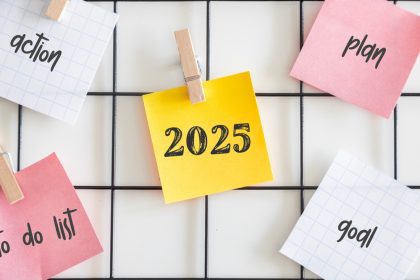The desire for personal transformation often stems from a growing awareness that our current patterns no longer serve our deeper aspirations. While overnight change remains elusive, six months provides a realistic timeframe to implement significant life adjustments that compound into remarkable growth. This window balances the need for immediate progress with the time required for new neural pathways to form, making it ideal for meaningful transformation. The journey toward becoming your best self involves more than superficial adjustments—it requires deliberate restructuring of daily habits, thought patterns, and relationship dynamics that shape your core identity.
The clarity catalyst: define your vision with precision
Transformation without direction resembles a ship without navigation—movement occurs but rarely leads to desired destinations. The initial phase of meaningful change requires developing crystal clarity about what “becoming a better person” specifically means to you. This foundation determines every subsequent decision in your transformation process.
Begin by examining your core values—the principles that matter most deeply to you regardless of external validation. Rather than adopting values that sound admirable, identify what genuinely resonates with your authentic self. These might include integrity, compassion, courage, growth, service, or countless other possibilities. The key lies not in which values you choose but in how truthfully they reflect your deepest convictions.
With these values identified, envision how your transformed self embodies them daily. Create detailed written descriptions of behaviors, thought patterns, emotional responses, and relationship dynamics that characterize this evolved version of yourself. Include specific scenarios that currently challenge you, imagining how your transformed self would navigate them differently.
This vision serves multiple crucial functions. First, it provides a clear target for your efforts, preventing the scattered approach that often derails transformation attempts. Second, it establishes concrete metrics to measure progress beyond vague feelings. Third, and perhaps most powerfully, it engages your brain’s reticular activating system—the filtering mechanism that brings relevant opportunities into awareness once you’ve clarified what matters.
The most effective visions balance aspiration with authenticity. Your transformed self should stretch beyond current limitations while remaining connected to your unique temperament, abilities, and life context. This ensures your path forward feels inspiring rather than imposed, sustainable rather than performative.
The habit revolution: restructure your daily actions
With your vision established, attention shifts to the systems that will transport you there—your daily habits. The profound truth of transformation lies not in occasional heroic efforts but in routine behaviors that accumulate imperceptibly until breakthrough becomes inevitable.
The six-month window provides ideal timing for habit development. Research indicates that complex behaviors require between 18 and 254 days to become automatic, with 66 days representing the average. This timeframe allows for multiple habit integration cycles within your transformation period.
Begin by conducting a comprehensive habit inventory. Document your current daily patterns without judgment, simply observing what behaviors currently occupy your time and energy. Next, evaluate each habit against your transformation vision, categorizing them as either supportive of your growth, neutral, or undermining your progress.
For habits that undermine your vision, identify their trigger-behavior-reward loops. Each habit persists because it provides some benefit, even when its overall impact proves destructive. Understanding these dynamics allows you to design replacements that address the same underlying needs through more constructive means.
Implement new habits using the minimum viable effort approach—starting with ridiculously small versions that eliminate resistance. Want to develop a meditation practice? Begin with just two minutes daily. Hoping to improve fitness? Start with five basic exercises each morning. The initial goal focuses on establishing the behavioral pattern rather than producing dramatic results.
The most powerful habit implementations follow established sequences within your existing routine. Rather than relying solely on motivation, attach new behaviors to stable triggers already present in your day. This environmental design approach creates natural cues that prompt your desired actions with minimal conscious effort.
Throughout this process, maintain objective measurement systems for each key habit. Daily tracking provides both accountability and evidence of progress that fuels continued effort when motivation naturally fluctuates. These records become particularly valuable during the inevitable plateaus when subjective feelings of progress temporarily diminish.
The mindset metamorphosis: transform your internal dialogue
While external behaviors form the visible architecture of transformation, internal dialogue determines whether your efforts will collapse under pressure or strengthen over time. How you speak to yourself about challenges, setbacks, and possibilities shapes every aspect of your growth trajectory.
Begin addressing your mindset by developing awareness of your current thought patterns. For one week, maintain a thought log documenting recurring mental narratives, particularly during stress, decisions, interactions with others, and reflection on personal capabilities. Patterns typically emerge quickly, revealing limiting beliefs that constrain your potential.
These limiting beliefs generally cluster around themes of fixed ability (“I’m just not good at this”), worthiness (“I don’t deserve success”), safety (“Trying new things leads to failure”), or identity (“This isn’t who I am”). Each belief served a protective function at some point but now prevents your evolution into your best self.
The transformation process requires systematically replacing these constraining narratives with expansive alternatives aligned with your vision. This doesn’t involve unrealistic positive thinking but rather developing nuanced perspectives that acknowledge challenges while maintaining possibility.
Implement this thought reconstruction through daily reflection practices. Each evening, review situations where limiting beliefs activated during the day. Draft alternative interpretations that maintain intellectual honesty while opening pathways forward. With repetition, these alternative perspectives gradually become your default framing.
The most powerful mindset shifts focus on growth orientation—viewing abilities as developable rather than fixed, interpreting setbacks as information rather than judgments, and perceiving effort as the pathway to mastery rather than evidence of deficiency. This perspective transforms obstacles from discouraging barriers into valuable feedback that guides continued development.
Throughout your six-month journey, pay particular attention to the stories you tell about your transformation itself. The narrative framing of your progress fundamentally shapes your persistence. View setbacks as temporary and specific while seeing progress as evidence of your developing capabilities rather than lucky exceptions.
The relationship realignment: transform your social ecosystem
Personal transformation never occurs in isolation. Your social environment either accelerates your evolution or actively resists it, making relationship recalibration essential for lasting change. The people surrounding you shape your norms, provide feedback, influence your beliefs, and either energize or deplete your resources for growth.
Begin by mapping your current relationship ecosystem, identifying the role each significant connection plays in your life. Some relationships provide emotional support, others intellectual stimulation, some practical assistance, and others shared experiences or history. Understanding these functions allows intentional decisions about nurturing, evolving, or releasing specific connections.
Next, assess how each relationship influences your transformation journey. Some people naturally encourage your growth, providing support, accountability, and modeling. Others subtly undermine change efforts through criticism, competing demands, or reinforcing old behavior patterns. This evaluation requires honesty rather than blame, recognizing that people may resist your changes because it disrupts established dynamics.
With this understanding, implement strategic shifts in your relationship patterns. For supportive connections, create structured involvement in your transformation journey. This might include regular progress discussions, shared activities aligned with your new habits, or explicit requests for specific types of accountability and encouragement.
For relationships that consistently undermine your growth, establish clear boundaries around triggering interactions. This doesn’t necessarily mean ending relationships but rather changing how they function in your life. Limit time in environments that activate old patterns, redirect conversations away from undermining topics, and explicitly communicate your needs regarding your growth efforts.
Perhaps most importantly, intentionally cultivate new connections with individuals who embody aspects of your aspirational self. Proximity to people already operating at your target level accelerates transformation through both tactical knowledge sharing and the powerful force of social norms. Even limited contact with growth-oriented individuals often catalyzes breakthroughs when existing relationships struggle to support new patterns.
Throughout this relationship realignment, maintain compassionate awareness that your transformation affects others in your life. Significant others, family members, and close friends have formed expectations and patterns around your current identity. Their resistance often stems from genuine concern or confusion rather than opposition to your wellbeing. Clear communication about your motivations and how your changes benefit shared values can transform potential resistance into active support.
The growth acceleration: targeted skill development
Becoming your best self inevitably requires acquiring new capabilities that expand your impact and effectiveness. The six-month transformation window provides sufficient time to develop foundational proficiency in several key skill areas that compound across various life domains.
Begin by identifying capability gaps between your current and aspirational self. Which specific skills would enable the behaviors and results you envision? Common transformational skills include emotional regulation, assertive communication, systems thinking, prioritization, influence, conflict navigation, and creative problem-solving. Select two to three areas where development would create disproportionate impact across multiple life domains.
For each targeted skill, implement a deliberate practice regimen following proven mastery principles. Break complex skills into component parts that can be practiced independently. Design focused sessions that stretch your current ability level with immediate feedback loops. Schedule these sessions during your peak mental energy periods, recognizing that skill development requires focused attention rather than mindless repetition.
The most efficient skill development combines conceptual understanding with practical application and reflection. Study the underlying principles through quality resources, immediately apply new concepts in low-stakes situations, then reflect on results to refine your approach. This learning cycle transforms abstract knowledge into embodied capability when repeated consistently.
Beyond specific skills, develop meta-learning capabilities that accelerate all future growth. These include understanding your optimal learning environments, recognizing when to focus on fundamentals versus nuance, effectively extracting insights from experiences, and accessing flow states that maximize improvement per hour invested. These meta-skills compound over time, increasing your transformation capacity beyond the initial six-month period.
Throughout your skill development journey, maintain balance between the discomfort of growth and the reinforcement of progress. Challenge yourself with increasingly difficult applications while regularly acknowledging improvement from your starting point. This balanced approach sustains motivation through the inevitable plateaus where visible progress temporarily stalls despite continued effort.
The environmental redesign: optimize your physical spaces
Your physical environment constantly shapes behavior through subtle cues that trigger automatic responses. Redesigning these spaces creates powerful leverage for transformation by making desired behaviors easier and competing patterns more difficult.
Begin by analyzing how your current environments either support or hinder your vision. Examine your home, workspace, digital spaces, and transportation through the lens of desired habits and mindsets. Physical arrangements, object placement, visual cues, and accessibility all influence behavior more powerfully than most realize.
For each key transformation area, implement strategic environmental adjustments. Creating a meditation practice? Designate a specific location with a comfortable cushion always available. Building a reading habit? Create a dedicated nook with your current book open and visible. Improving nutrition? Reorganize your kitchen with healthy options at eye level and less supportive choices less accessible.
Beyond habit-specific changes, design your broader environment to reduce decision fatigue and willpower demands. Streamline routine choices through systems like simplified wardrobes, meal templates, and standardized schedules for recurring tasks. Each decision automated frees mental bandwidth for more meaningful growth challenges.
Digital environments require particular attention during transformation periods. Your devices present constant triggering cues for established behavior patterns. Restructure these digital spaces by removing problematic applications, adjusting notification settings, implementing strategic friction for distracting sites, and creating separate user profiles for productive versus leisure activities.
Throughout this environmental redesign, focus on creating spaces that energize rather than deplete your resources. Consider how lighting, nature exposure, clutter levels, color psychology, air quality, and ergonomics influence your cognitive and emotional state. These seemingly superficial factors dramatically impact your available capacity for challenging growth work.
The most powerful environmental designs incorporate progress visibility—physical reminders of your commitment and improvement that maintain motivation during difficult phases. Tracking charts, vision boards, milestone markers, and other visual representations of your journey provide crucial reinforcement when internal motivation naturally fluctuates.
Navigating the transformation timeline
The six-month transformation journey follows predictable phases, each requiring different approaches for optimal progress.
The enthusiasm phase (Weeks 1-3)
The initial weeks bring motivation surges as new possibilities energize your efforts. Leverage this energy by establishing key structural elements of your transformation: tracking systems, environmental adjustments, and initial habit triggers. Be wary of taking on too much too quickly, which can lead to subsequent crashes. Instead, focus this energy on building sustainable systems that will carry you through later phases.
The reality confrontation phase (Weeks 4-8)
As initial excitement fades, the real work begins. Old patterns reassert themselves while new habits still require conscious effort. This phase tests your commitment and reveals gaps in your implementation strategy. Focus on consistency over intensity, troubleshooting specific obstacles rather than questioning the entire endeavor. Document small wins diligently, as subjective feeling often lags behind actual progress during this phase.
The integration phase (Weeks 9-16)
By the second and third months, initial habits become more automatic, requiring less conscious effort. New patterns start feeling more natural, though old triggers can still activate previous behaviors during stress. Use the freed mental bandwidth to implement secondary habits that support your primary changes. Social feedback often increases during this phase as others notice shifts in your patterns, providing external reinforcement.
The identity evolution phase (Weeks 17-24)
The final months involve subtle but profound identity shifts as new patterns become increasingly automatic. You begin naturally seeing yourself as the person you aspired to become. Focus on solidifying this identity evolution through deliberate reflection on your journey, seeking growth-oriented challenges that confirm your new capabilities, and adjusting your social presentation to align with your evolved self-concept.
Beyond the six-month mark
Lasting transformation extends beyond the initial six-month intensive period. Plan for ongoing evolution by establishing maintenance systems, scheduling regular review periods, identifying next-level growth areas, and developing mechanisms to prevent regression during high-stress periods.
Throughout each phase, maintain balanced awareness of both progress and growth opportunities. The path to your best self involves celebrating genuine improvement while continuously refining your approach based on emerging insights. This balanced perspective prevents both complacency and the discouragement that comes from focusing exclusively on the distance remaining.
The six-month transformation journey ultimately creates more than specific habit changes or skill improvements. It develops your fundamental capacity for intentional growth—the meta-skill of consciously directing your own evolution. This capability serves you long after the initial transformation period concludes, enabling continuous refinement of your life alignment with deepest values and aspirations. The initial six months represent not an endpoint but the establishment of a growth trajectory that continues throughout your lifetime.

















